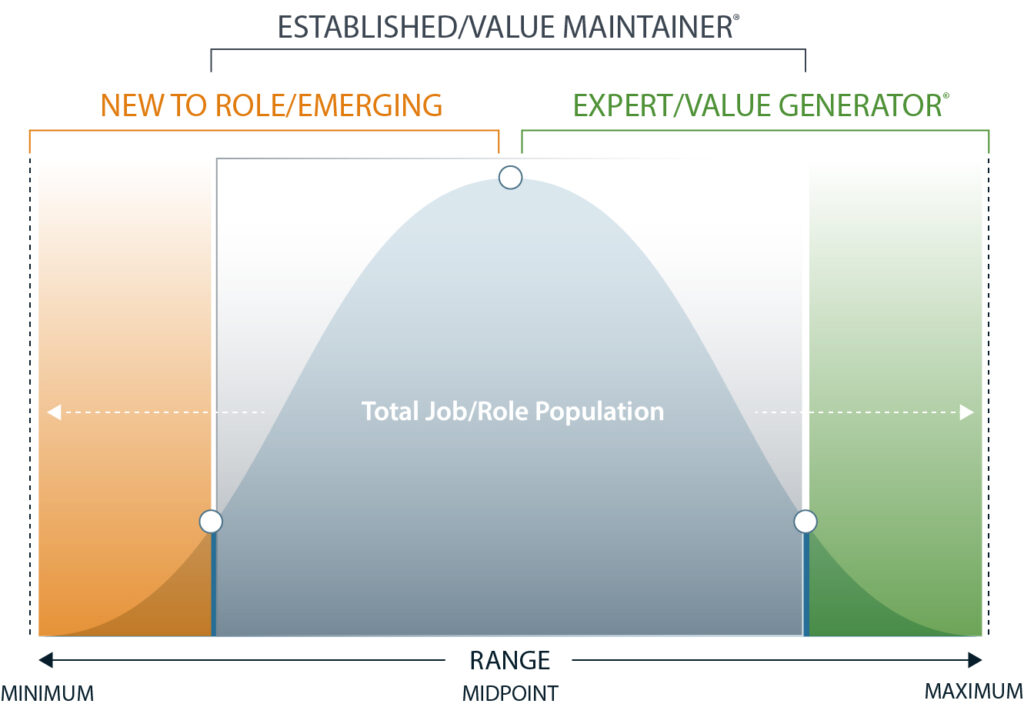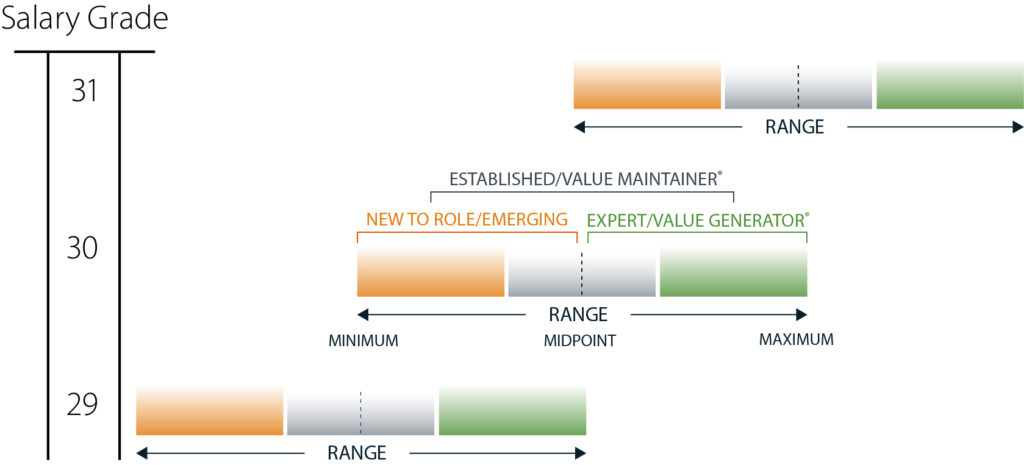NFPCC Original Article: Where Has All The Merit Gone?
It’s that time of year again as we enter the final quarter of a compensation cycle and the beginning of a new football season, with renewed hopes that this is your team’s year. With this entry into salary planning time for the general employee population, HR departments are currently in the throes of the HR “Super Bowl” of evaluating, entering, budgeting, recommending, and processing compensation adjustments for 2018. This period lasts but a mere 4 months on paper; however, the process is constantly evolving and never has a final goal line, much to the chagrin of the stellar HR departments. NFPCC has been assisting many of these HR departments over the years on the compensation planning process and alternative ways of thinking about the process and how best to assist each unique company situation. The following outlines a few of NFPCC’s key points of interest for HR to share with their companies.
Philosophical Approach to Setting Compensation Levels
NFPCC has established a philosophical approach to setting compensation that is used in reasonable compensation processes; specifically, in the establishment of rebuttable presumption of reasonability of compensation plans. Each year NFPCC conducts hundreds of reasonableness of compensation analyses directly with the IRS. As such, NFPCC has had direct insight with market best practices in addition to the legality and general acceptability of compensation plans from a government and audit perspective. Based on these understandings and Generally Accepted Compensation Principles® (“GACP”), NFPCC has utilized three career stages and the targeted levels of compensation for each area of compensation (Base Salary and any associated Incentive Compensation), which aligns legally accepted principles with what is known to be market best practices. The following outlines each of these three stages and the typical associated compensation alignment:
- New to Role: Typically, an employee in this career stage is a newly appointed individual and is learning and not yet fully performing the full scope of job requirements. These employees are requiring direction in navigating specific areas of their responsibilities. Over time these employees can/will move into the Value Maintainer® or Value Generator® stages based on their ability to develop competencies.
- Emerging: These employees are deep into the learning curve, developing competencies and improving productivity. They typically still require some direction or are learning key aspects of the job. Over time these employees can/will move into the Value Maintainer® or Value Generator® stages based on their ability to develop competencies.
- Established/Value Maintainer® Typically, an employee in this career stage is fully functioning in their roles and responsibilities. They have demonstrated the desired competencies and behaviors, they are productive, use sound judgement, and serve as mentors. However, these employees are not driving the company further or viewed as an employee that will “move the needle” as it relates to company performance and/or public perception.
- Expert/Value Generator® An employee that creates value for stakeholders above the 50th percentile of their peers, and should be compared closer to the market 75th percentile, indicating the market compensation for a seasoned incumbent or someone who continually exceeds expectations. Value creators are the unique persons who have the vision and aptitude to lead in their capacity. Without these creators, the maintainers would not be able to work towards defined corporate visions and move the company forward.
NFPCC notes that the Value Maintainer® career stage will on average consist of the majority of the workforce. Additionally, once associates that are New to the Role or Emerging meet the expectations of their roles and move into the Value Maintainer® career state, it is likely that the majority of these associates will not move into being Value Generator® thus resulting in salary levels aligned with the market midpoint year over year, assuming merit increases and the salary structure are able to keep pace with inflation and cost of living adjustments. The following graphic illustrates where on the scale each career level would typically fall within a given salary grade range.
Salary Ranges and their Reasonableness
In connection with the above philosophy as well as GACP®, a company and its HR team will be able to establish an appropriate range of reasonableness as it relates to setting compensation levels for each job. As the philosophical approach to setting compensation has shifted, this range of salary grades has shifted over the years. Specifically, in the 1990’s and early 2000’s salary ranges typically consisted of a +/- 10% or .90 to 1.10; whereas today, salary ranges have widened to +/- 15% or .85 – 1.15. For the general population, it is important to maintain the highest feasible comp-ratio, while ensuring alignment with at least the salary grade minimum. The following graphic illustrates the overlapping nature of salary grades (to ensure easier grade penetration and movement between grades) and the corresponding impact of career levels.
Merit Increase Vs. Market Adjustment Vs. Tenure Systems
Over the years, the general thought process behind adjusting compensation on a year over year basis has shifted in alignment with philosophical approaches to compensation. Historically, tenure-based systems have been the most widely utilized to build in loyalty and goodwill by rewarding staying employed with an organization. However, over recent history, organizations have been moving away from tenure-based systems due to the many downfalls of this type of system and have transitioned to a merit-based philosophy. This has been mainly due to the continued growth of the economy over days’ past with low inflation rates and stagnated economic growth. Coinciding with this economic prosperity, the idea of free enterprise has exploded, whereby competing organizations have raced to win the attraction and retention of prized employees. This shift has become more problematic for employers in their quest for retention and motivation, thus leading to the establishment of market adjustments based on available data sources to retain these key executives. The following is an outline of each of these methods:
- Merit Increases: A raise in an employee’s salary due to goal achievement and/or other criteria, based on the Merit of an individual’s performance in relation to expectations.
- Market Adjustment: The adjustment that is necessary for an individual or an organization to bring the individual or organization to approximate market values based on replacement value.
- Tenure Systems: System in which the primary basis for pay increases is the employee’s tenure.
- Devalues Exceptional Performance: The notion that having more tenure implies you are more valuable than someone else simply isn’t true. Studies have shown that simply having more years of experience does not make you a more valuable employee. It is true however, that as an employee gains experience they are more likely to become more valuable than having no experience. However, while experience may be an important part of becoming more valuable, it isn’t enough on its own.
- Incentivizes Employees to Voluntarily Exit the Company: Salary compression has shown to be the most prevalent reason for good employees resigning from their post. Compression occurs when the rate of pay increases for an individual in a particular role doesn’t keep up with the job market’s valuation of that role.
- Disincentivizes Employees to Grow Their Value Contribution: If your compensation ladder communicates to employees that the path to higher compensation is simply to have more years of experience, it inherently disincentivizes employees in fostering the value contribution to the company.
Each of these systems is unique and are often able to work in tandem with one another. Specifically, the market adjustment system should be utilized to determine the current market rates for each unique job/role and the establishment of a salary grade structure, whereas the merit and tenure systems should be used to differentiate between individuals within each job/role. It is understandable that the process of tying these various systems together may take time to differentiate between new employees and tenured employees; however, this creates a philosophical question of what is the purpose of the merit system and performance evaluation versus awarding purely for tenure. Lastly, each system is not without its flaws and additional consideration for further one-off case by case basis adjustments may be warranted in the upcoming adjustment cycle to recognize these longer tenured employees versus newly hired employees, showing that the Merit in the Merit cycle is still alive and well.








